
Heretic is a dark fantasy first-person shooter video game released in December 1994. It was developed by Raven Software and published by id Software through GT Interactive.

Sid Meier's Civilization II is a turn-based strategy video game in the Civilization series, developed and published by MicroProse. It was released in 1996 for PCs, and later ported to the PlayStation by Activision.
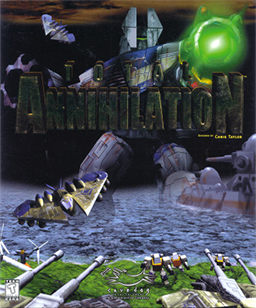
Total Annihilation is a real-time strategy video game created by Cavedog Entertainment, a sub-division of Humongous Entertainment, and was released in September 1997 by GT Interactive for Microsoft Windows and Mac OS. Two expansion packs were released, The Core Contingency on April 29, 1998 and Battle Tactics on July 20. After the closure of the Cavedog Entertainment in 1999, the intellectual property fell to Infogrames.

Krome Studios Melbourne, originally Beam Software, was an Australian video game development studio founded in 1980 by Alfred Milgrom and Naomi Besen and based in Melbourne, Australia. Initially formed to produce books and software to be published by Melbourne House, a company they had established in London in 1977, the studio operated independently from 1987 until 1999, when it was acquired by Infogrames, who changed the name to Infogrames Melbourne House Pty Ltd.. In 2006 the studio was sold to Krome Studios.

Starlancer is a space-based science fiction flight simulator computer game, created by Erin and Chris Roberts, and developed by Warthog Games under the auspices of Digital Anvil.
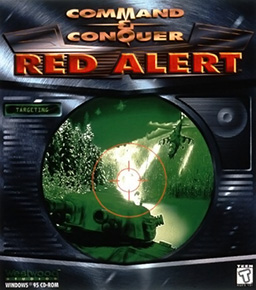
Command & Conquer: Red Alert is a real-time strategy video game in the Command & Conquer franchise, developed and published by Westwood Studios in 1996. The second game to bear the Command & Conquer title, Red Alert is the prequel to the original Command & Conquer of 1995, and takes place in the alternate early history of Command & Conquer when Allied Forces battle an aggressive Soviet Union for control over the European mainland.

NBA Live 98 is a basketball video game based on the National Basketball Association and the fourth installment of the NBA Live series. Its cover art features Tim Hardaway of the Miami Heat. The game was developed by EA Sports in 1997 for Windows, PlayStation, and Sega Saturn, while also being the final NBA Live game released for the Super NES, Genesis, and Sega Saturn.

Command & Conquer: Renegade is a first- and third-person shooter video game developed by Westwood Studios and is part of the Command & Conquer series. It is the only Command & Conquer game that uses the first-person view. It was released on February 26, 2002 by EA Games. The game received generally favorable reviews from critics.

KKnD, or Krush, Kill 'n' Destroy is a series of post-apocalyptic real-time strategy games by Beam Software. KKnD was released in 1997, while a sequel - KKND2: Krossfire was released in 1998. KKnD Xtreme, an expanded version of the original, featuring extra missions and enhancements, was released in 1997, and later re-released on GOG.com in 2012.

Seven Kingdoms is a real-time strategy (RTS) video game developed by Trevor Chan of Enlight Software. The game enables players to compete against up to six other kingdoms allowing players to conquer opponents by defeating them in war, capturing their buildings with spies, or offering opponents money for their kingdom. The Seven Kingdoms series went on to include a sequel, Seven Kingdoms II: The Fryhtan Wars. In 2007, Enlight released a further title in the Seven Kingdoms series, Seven Kingdoms: Conquest.

Cool Boarders is a snowboarding video game developed by UEP Systems for the PlayStation.
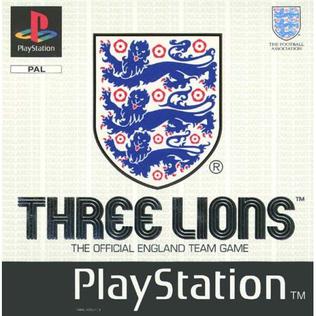
Three Lions, released in North America as Alexi Lalas International Soccer, is a video game developed by Z-Axis and published by Take-Two Interactive, based on European football (soccer). It was released for the PC, PlayStation and Game Boy Color on 17 April 1998 and in 1999 as the official video game of the English Football Association. Originally announced under the title "Major League Soccer", it was also marketed under other names in other regions, including Golden Goal 98, Bomba:98 All Champions Challenge, Mundial:98 and Pro:Foot Contest 98.

Close Combat: A Bridge Too Far, or Close Combat II, is a World War II real-time computer wargame, developed by Atomic Games, and released on October 13, 1997. The second installment of the Close Combat series, the game is played on a two-dimensional map, between two players.
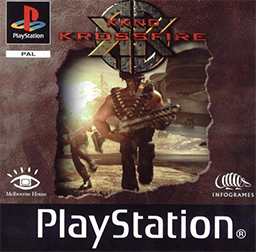
KKnD2: Krossfire is the sequel to KKnD in the KKnD series developed by Beam Software and published by Melbourne House in 1998 for Microsoft Windows. It was released on PlayStation in Europe in late 1998 to early 1999 as KKnD: Krossfire. It is set in the year 2179, 100 years after the Nuclear World War. After spending another four decades underground,the Survivors rose up to a new enemy: the Series 9. The Series 9 robots are machines that have advanced from their farming origins and taken up arms against the humans, Evolved and Survivor, who destroyed their precious crops, their one and only reason for functioning.

Command & Conquer 3: Kane's Wrath is an expansion pack for the 2007 real-time strategy video game Command & Conquer 3: Tiberium Wars. Developed by EA Los Angeles studios and BreakAway Games studios, it was released worldwide in March 2008 for Microsoft Windows and in June 2008 for Xbox 360 by publisher Electronic Arts.
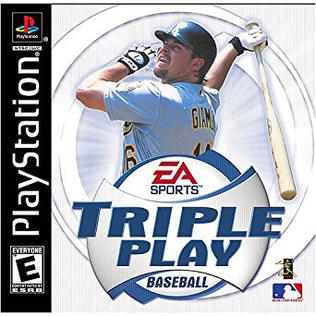
Triple Play Baseball is a baseball sports game released for the PlayStation, PlayStation 2 and Microsoft Windows in 2001. It would be the last game in the Triple Play series released for the PlayStation and Microsoft Windows, but was the first game in the series to be released on the PlayStation 2. The game features Oakland Athletics first baseman Jason Giambi on the cover.

Command & Conquer: Remastered Collection is a remaster of the first two titles in the real-time strategy video game series Command & Conquer with rebuilt graphics and sound improvements, and bonus materials. It was developed by Petroglyph Games with Lemon Sky Studios, and published by Electronic Arts. It was released on June 5, 2020, for Origin and Steam. A physical edition intended for collectors was released by Limited Run Games.

NHL Powerplay 98 is a sports video game developed by Radical Entertainment and published by Virgin Interactive and Sega for Microsoft Windows, PlayStation, and Sega Saturn in 1997. It is the sequel to NHL Powerplay '96; there was no "'97" entry in the NHL Powerplay series. After Virgin opted not to release the game for the Sega Saturn, Sega acquired the rights and published the Saturn version under the title NHL All-Star Hockey 98 so as to make it a continuation of Sega's own NHL All-Star Hockey series.
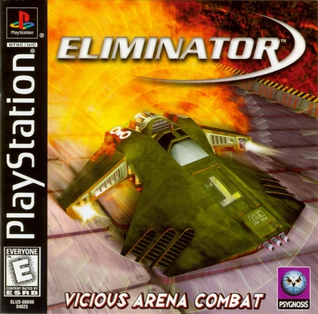
Eliminator is a shooter game developed by Magenta Software and published by Psygnosis for PlayStation and Microsoft Windows in 1998–1999.



















